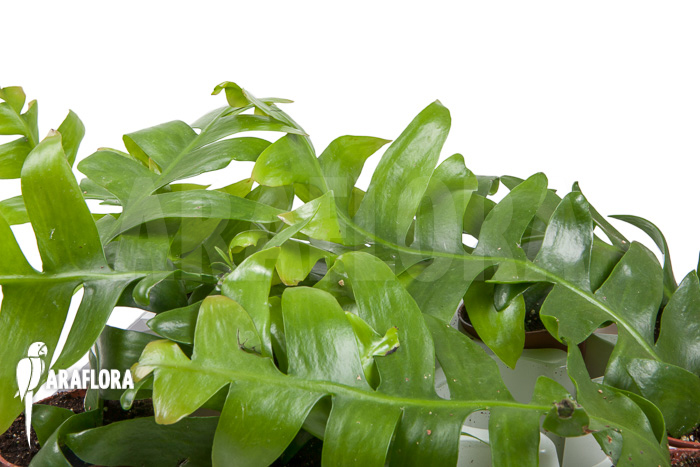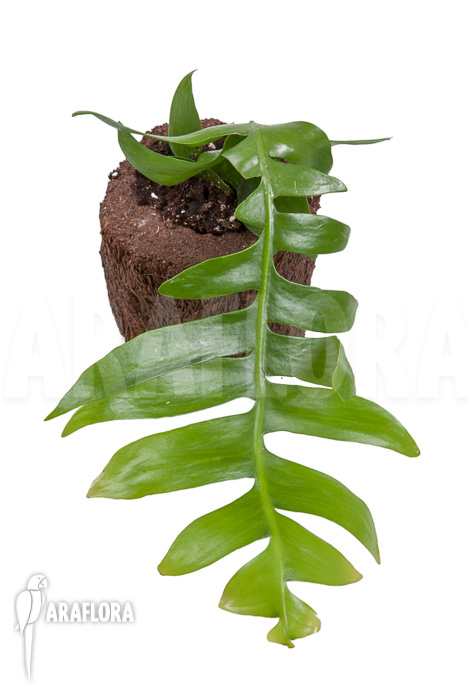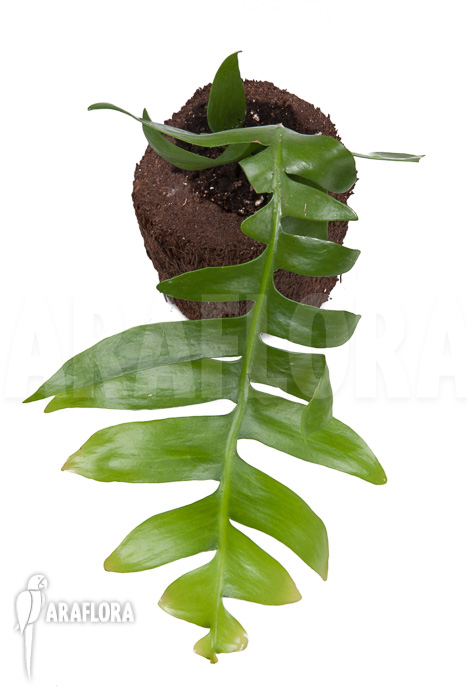Epiphyllum chrysocardium - SuCa281
Epiphyllum chrysocardium - SuCa281
This beautiful epiphyteic cactus also goes by the name of ‘fernleaf cactus’ because of its long, fern-like zig-zagged leaves. With adequate care this exotic houseplant can flower with large, splendid white flowers. Selenicereus chrysocardium is a unique houseplant that can give your room a tropical and exotic feel.
Currently not in stock
€ 0,00
Keep me up to date?
Araflora will inform you as soon as the product is available again. Please fill in your e-mail address and we will let you know as soon as the product is back in stock. You will get an e-mail message when the product is available again. Unfortunately we cannot say how long this will be or what the price is likely to be.

Receive an e-mail when new stock of this plant arrives.
Share this plant? Press on one of the following icons.
Usually people associate a cactus with a spiny plant with big succulent structures in a dry, harsh and sunny environment. Selenicereus chrysocardium however, is totally different. Although it is genetically related to the type of cacti found in the desert, this species lives high up in the trees in the tropical rainforests of southern Mexico. Instead of big succulent structures that regular cacti have, this species have flat, elongated leaf-like structures called ‘cladodes' that help the plant capture every little ray of sunlight that shines through the dense rainforest. This plant was formerly known as Epiphyllum chrysocardium.


Although this tropical houseplant is technically a cactus, it requires different care that regular cacti. This exotic species is an epiphyte and therefore requires well-draining soil. A mixture of bark, perlite and regular potting soil would be very well suited for this species. Always keep the plant on the dry side, and only water when the soil is (almost) completely dry. This plant will do best with plenty of bright, indirect light. Be very careful with direct sunlight, as it can easily burn the leaves. A spot in an eastern or western window would be best, avoiding the intense direct sunlight at midday. Selenicereus chrysocardium will grow well at room temperature (18⁰-20⁰C), but can also withstand higher temperatures.







 10 cm
10 cm
 5 cm
5 cm












